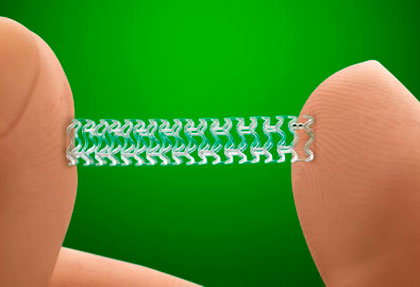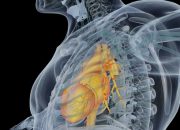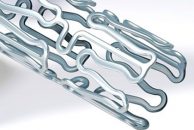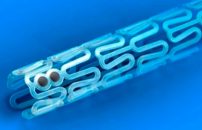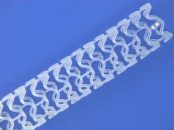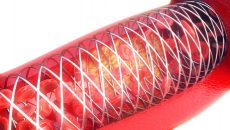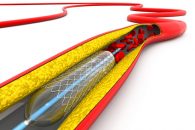This study sought to compare the 2-year outcomes between bioresorbable vascular scaffolds (BVS) and everolimus-eluting metallic drug-eluting stents (EES), since the occurrence of very late thrombosis (thrombosis beyond 1 year after implantation) is an increasing concern in relation to new devices. This meta-analysis was conducted based on 24 studies (BVS: n = 2567 and EES: n = 19,806) reporting the…
Left Main Coronary Artery Angioplasty Would Be Non-Inferior to Surgery
Courtesy of Dr. Carlos Fava. Left main coronary artery (LMCA) lesions have always been defined as high-risk, with surgery as treatment of choice. Drug-eluting stents (DES) have slowly changed that, but their use still lacks strong supporting evidence. The Evaluation of XIENCE versus Coronary Artery Bypass Surgery for Effectiveness of Left Main Revascularization (EXCEL) study…
Xience V: Safe in “Real-Life” Bifurcation Lesions
Courtesy of Dr. Rodrigo Abreu. INTRODUCTION Bifurcation lesion treatment has evolved considerably in the last years: from balloon angioplasty (with high occlusion and restenosis rates) to bare metal stent angioplasty (with a procedural success around 86% and major adverse cardiac events [MACE] at 1 year around 32%). The subsequent emergence of drug-eluting stents (DES) reduced…
ABSORV at Long Term in Daily Practice Lesions
This work reports one year outcomes of the BVS Expand registry. Multiple studies have shown the safety and feasibility of the everolimus eluting bioresorbable scaffold ABSORB (Abbott Vascular, Santa Clara, California), but medium and long term data are limited and only on simple lesions. This is a prospective single-center registry assessing ABSORB performance in…
BVS: Comparable to Second-Generation DES in Complex Lesions
A center carrying out a mid- to long-term follow-up of the performance of everolimus-eluting bioresorbable scaffolds (Absorb) observed that this new device has an acceptable rate of major cardiovascular events, when compared to second-generation drug-eluting stents. Furthermore, although the population was complex and non-selected, no cases of early thrombosis were reported. This study enrolled 249 patients…
DAPT after PCI with EES: 6 or 12 Months?
Original Title: 6-Month versus 12-Month Dual-Antiplatelet Therapy Following Long Everolimus-Eluting Stent Implantation. The IVUS-XPL Randomized Clinical Trial. Reference: Hong et al. JACC Cardiovasc Interv. 2016 May 11. [Epub ahead of print] Courtesy of Dr. Brian Nazareth Donato. This publication stems from the IVUS-XPL published by JAMA in November 2015. This study presents outcomes on the…
Instent restenosis: Drug eluting balloons or drug eluting stents?
Original Title: Long-Term Results of Everolimus-Eluting Stents versus Drug-Eluting Balloons in Patients with Bare-Metal In-Stent Restenosis 3-Year Follow-Up of the RIBS V Clinical Trial. Reference: Alfonso F. et al. JACC Cardiovasc Interv. 2016 Jun 27;9(12):1246-55. Courtesy of Dr. Agustín Vecchia. RIBS V 3 year follow up Stents have become the gold standard for…
Stent thrombosis: Comparative analysis between BMS, DES and BRS
Original Title: Stent Thrombosis with Drug Eluting Stents and Bioresorbable Scaffolds. Evidence from a Network Meta-Analysis of 147 trials. Reference: Kang S et al. J Am Coll Cardiol Intv 2016 doi 10.1016. Courtesy of Dr. Guillermo Migliaro. When treating heart disease, drug eluting stents (DES) have become essential for PCI. Its main advantage lies on…
SORT OUT IV at 5 years: second generation DES efficacy confirmed
Original Title: Safety and efficacy of everolimus-versus sirolimus-eluting stents: 5-Year results from SORT OUT IV. Reference: Jensen LO et al. J Am Coll Cardiol. 2016;67:751-762. Reassuring long term outcomes from SORT OUT IV confirm the safety and efficacy of second generation everolimus eluting stents (EES) over first generation DES. The difference at 5-year follow up…
Definite/Probable Thrombosis with Bioresorbable Scaffolds
Original Title: Scaffold Thrombosis After Percutaneous Coronary Intervention With ABSORB Bioresorbable Vascular Scaffold. A Systematic Review and Meta-Analysis. Reference: Michael J. Lipinski et al. J Am Coll Cardiol Intv. 2016;9(1):12-24. The authors of this study carried out a systematic review and a meta-analysis to determine the thrombosis risk of the bioresorbable everolimus eluting scaffold ABSORB (Abbott…
